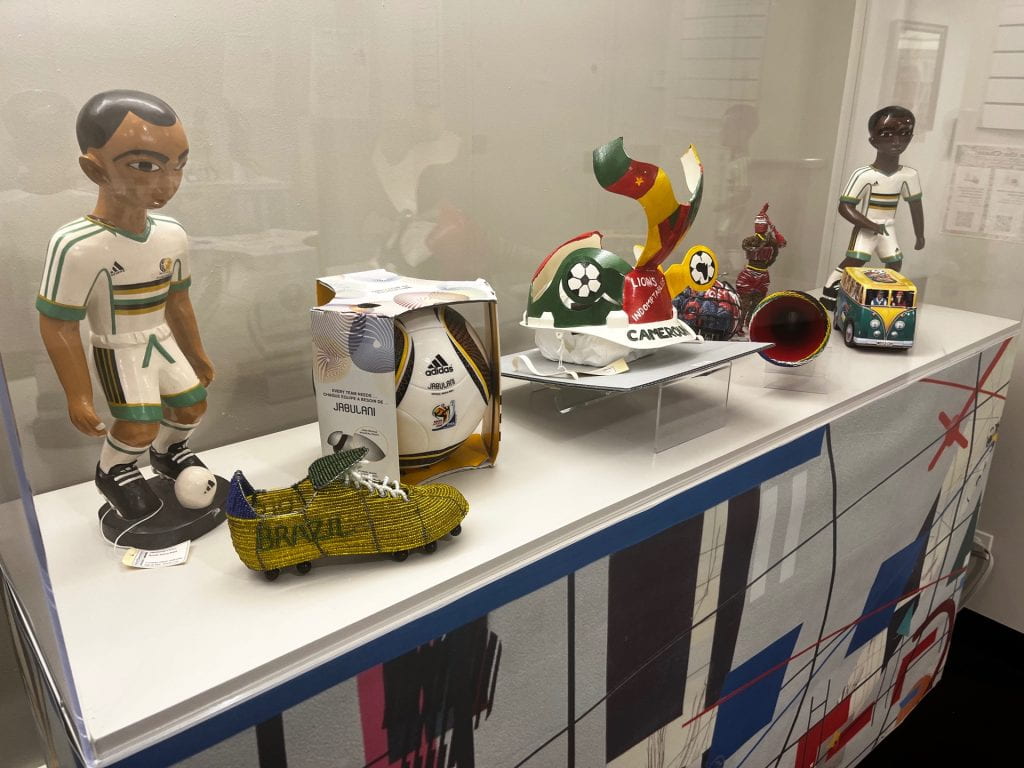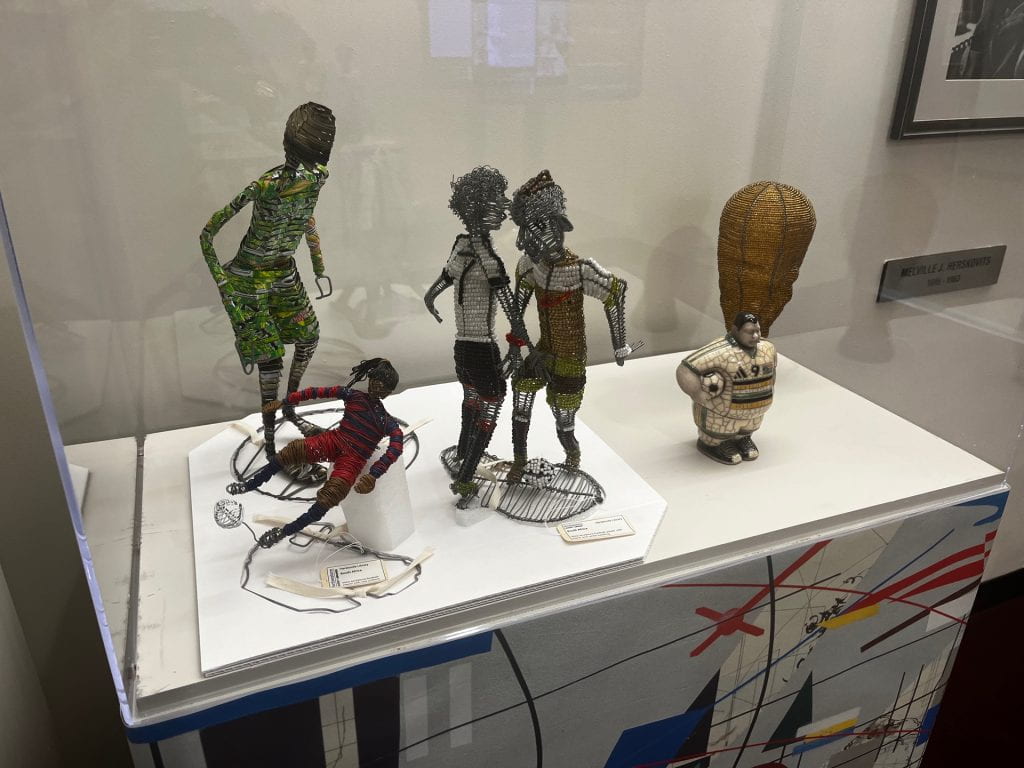
“Chasing the Ball” features artifacts from the 2010 World Cup in South Africa, including statuettes, wire sculptures, and fan-made paraphernalia.
By Natalia Gonzalez Blanco Serrano ’24
Though the World Cup is half a world away, one graduate student at Northwestern is bringing the international competition home to the Libraries.
Bright Gyamfi, history department presidential fellow and PhD candidate, curated “Chasing the Ball: Celebrating the FIFA World Cup,” an exhibit in the Melville J. Herskovits Library of African Studies comprised of books, souvenirs, and paraphernalia from the 2010 South Africa World Cup. Gyamfi—whose academic interests focus on Pan-Africanism and African intellectual decolonization—was originally drawn to Northwestern because of its wealth of African artifacts and knowledge. “To people in this field, Northwestern historically has been the seat of African  studies and African history,” he explained. “Northwestern has the biggest archival collection on Africa in the U.S., if not in the world.”
studies and African history,” he explained. “Northwestern has the biggest archival collection on Africa in the U.S., if not in the world.”
To make the most of that collection, Gyamfi set out to make a display about soccer and its impact on African culture. However, he had more than just soccer on his mind. “Soccer is a way to raise conversations around citizenship, national unity, and also to talk about racism,” he said.
Gyamfi was in the U.K. last year when England played against Italy. The game went to penalty kicks after finishing tied 1-1; in the last moment of the game, multiple African players for the English team missed their PKs, ending in a win for Italy. “When these two Black football players missed the penalty kick, I witnessed the onslaught of racism,” Gyamfi recalled.
Soccer is very closely linked to the question of citizenship, he said; a Black or African player might be the star of a European team for an entire season, but when they falter or fail, their citizenship and belonging is called into question. Gyamfi hopes viewers of “Chasing the Ball” will begin to interrogate the ways people can be treated as “other” despite — or even because of — their celebrity status.
The World Cup is a chance for people to learn more about other cultures, but almost just as importantly, it allows people to question their own. Soccer is a unifying, international culture. But Gyamfi asks an even more pressing question: who belongs to an international culture, and who is always on the fence?
“Chasing the Ball” can be found on the 5th floor of University Library at the entrance of the Herskovits Library.
Natalia Gonzalez Blanco Serrano is a Medill School of Journalism junior

Wire sculptures of soccer players and a World Cup trophy replica from the 2010 event.
